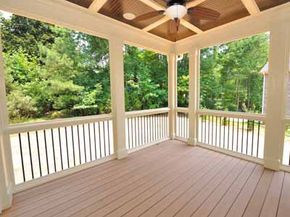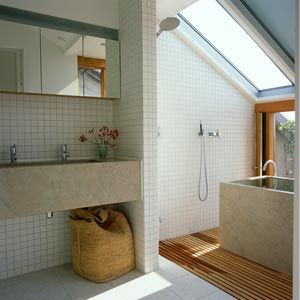It used to be much easier to decide how to construct a deck. Did you want to make it out of wood -- or wood? Nowadays, there's a vast array of decking available, and some of it doesn't even have a trace of wood in it. Why all the options? It's part of our never-ending quest to make things better, easier and more convenient.
Advertisement
The common denominator in wood decking, whether it's treated pine, redwood or cedar, is the need for regular care and maintenance. Sanding, staining and resealing are an annual chore for some, but others might go two or three years between treatments.
In recent years some sharp entrepreneurs, recognizing that many homeowners might appreciate a lower-maintenance option, came up with some alternatives. In addition to vinyl and aluminum, there's even plastic decking available now. But the segment of the decking industry that's seen the biggest change is what's called composite decking.
Composite decking is typically made from a combination of different materials (namely, wood and plastic), which are processed to give the appearance of wood. Both the wood (which consists of lumber industry byproducts like sawdust, chips and wood fiber) and the plastic can be made from virgin or recycled material [source: Jones].
Manufacturers mix the components, often adding a pigment and preservative. The mixture is heated, formed into board-shaped lengths and then cooled. The resulting board of composite decking is usually heavier than wood but not as strong. But composite decking is resistant to rot, doesn't warp, won't give people splinters, and doesn't need to be painted, stained or sealed.
The color of most composite decking will fade somewhat after the initial installation. Homeowners are encouraged to keep their composite decking swept clean, attend to any stains as soon as possible, and hose it down twice a year, finishing with a soap and water scrub [source: Decks].
Head over to the next page to read about the different types of composite decking.
Advertisement

